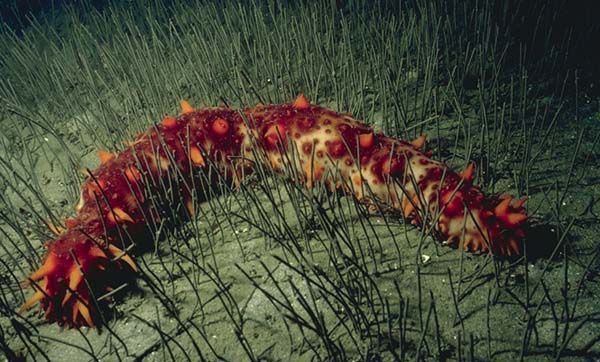California Sea Cucumber
(Parastichopus californicus)

Dedicated to Kara Yopak...finally!
Kara said "I want you to do a sea cucumber, and we here (ok, Sara here) answered as soon as the time for echinoderms came around. "But, Sara," you say, "that thing is not a starfish." Ah. Yes. Well, there are actually other creatures in Phylum Echinodermata, divided into 5 classes: Asteroids (sea stars), Ophiuroids (brittle stars), Echinoids (sea urchins and sand dollars), Crinoids (which are sometimes called sea lilies but most people just call them crinoids), and Holothuroids (sea cucumbers.) All of these have pentamerous radial symmetry. That means that they generally have a circularly arranged body plan with five parts. Imagine a sea star, and fold its arms up so all the tube feet are on the outside, and join the arms together. That's sort of the general body plan of a sea urchin. Now, imagine stretching that urchin out so instead of being a little round dome, it is a long tube. That's the sea cucumber body plan. There are five rows of tube feet that run along the body, with a mouth at one end, and an anus at the other. They breathe via two respiratory trees along the side of their digestive system (yes...they breathe through their anus...) Some can eject their digestive system when upset and regrow it back in a few weeks. Some species even have a fish called a pearl fish which lives near their respiratory organs (yes...it lives there...) The species above is the first one I thought of as an example of a sea cucumber. It lives along the Pacific coast, and can grow to be 20 inches long. In Asia, some people eat dried sea cucumber (trepang), but all accounts I have heard compare eating them to eating shoe leather.
Take me back to Species of the Week!
Take me back to the Main
Page!